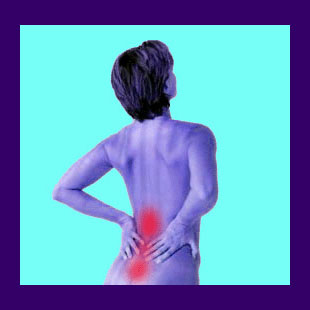
EMG for back pain is a diagnostic procedure that utilizes electrical and neurological stimulation of nerves and muscles in an effort to trace the origin of locally expressed symptoms, such as pain, tingling, numbness and weakness. EMG is the accepted medical acronym for electromyography.
EMGs are not typically used to diagnose primary back pain or neck pain syndromes. They are instead used to ascertain the normality or dysfunction of muscles in the legs, feet, arms and hands that might suffer symptoms relating to a spinal, local or systemic causation. EMG testing is valuable to help diagnose the source process that is responsible for a wide range of neuromuscular disorders.
EMG tests are usually performed by a neurologist, but in some cases, may be administered by a PA or specially-trained technician. Since the progression of the test will be determined by the results in real time, the better qualified the diagnostician is, the more useful the results will usually be.
This report explains the use of electromyography for diagnosing peripheral nerve or skeletal muscular dysfunction that might be linked to a spinal causation.
What is EMG for Back Pain?
Electromyography is one of the most common of all neurological studies performed. This is because it can relatively accurately diagnose a wide range of neuromuscular deficits by tracing the symptoms back to their anatomical source destinations.
EMG measures muscular response to neurological and electrical stimulation at rest and during contraction. Depending on the results, a trained physician can determine if the symptoms might be originating from spinal nerve causation, localized neurological causation or muscular causation. This is very helpful in ruling out many possible causes of the symptomatic expression and narrowing down the few remaining possibilities to those which seem most appropriate, given a patient’s history, clinical presentation and current symptomology.
EMG for back pain testing is rarely used for primary diagnostic purposes, although it can be. More often, it is utilized to confirm a diagnostic suspicion, to study several possible causes of symptoms in an effort to eliminate one or more origins, or to confirm a diagnostic pronouncement, often in an effort to move the patient along in the treatment process, usually into surgical intervention.
For most suspected spinal causations, EMG testing is usually performed on the upper body or the lower body, but sometimes can be performed on the entire anatomy, depending on the location and nature of the back pain symptoms expressed. For suspected spinal causations that create symptoms in the upper appendages, the arms and hands will be subjected to the test. Meanwhile, for spinal causations thought to be responsible for enacting lower limb expressions, the legs and feet will be exposed to diagnostic evaluation. For systemic symptoms and those suspected of being linked to neuromuscular disease or syndrome, the entire anatomy might be subjected to EMG study.
Electromyography for Back Pain Procedure
EMG testing comes in several forms and is often performed in combination with nerve conduction evaluation, as well, since the tests are complementary.
Noninvasive EMG simply uses surface-placed electrodes to deliver stimulation and monitor the muscular responses. Typically this technique is utilized in particular suspected causations or when the test is performed by a person who is not qualified to deliver the more invasive version of the procedure.
Noninvasive EMG testing is not painful to most patients, although some people do report discomfort from higher degrees of electrical stimulation delivered via the electrodes.
Invasive EMG testing also uses surface electrodes for part of the test, but then progresses to use needle insertion into the muscular tissues to gauge their response to stimulation and contraction. Invasive EMG is more comprehensive and is also tighter regulated in terms of who can perform the procedure and under what circumstances.
Invasive EMG for back pain testing might prove to be uncomfortable at the low end of the spectrum and utterly torturous at the upper echelon of pain experienced. Many readers have written to us citing minor warnings of “mild discomfort” from their doctor, when in reality, the pain suffered was immense and sometimes lasted for weeks or months after the procedure. Lumbar pain and accompanying lower body neuropathy patients report higher levels of pain than cervical and accompanying upper body neuropathy test recipients by a margin of 4 to 1, although some carpal tunnel patients cited the worst imaginable pain as exceptions to this rule.
The results gathered during testing will be evaluated by the diagnostician and conclusions reached to help determine, or rule out, the actual source of symptoms. Testing can take 20 to 90 minutes, depending on case-specific criteria and conclusive results will usually be available in 1 to 7 days time.
Efficacy of EMG for Back Pain Diagnosis
EMG is occasionally performed in cases of primary back or neck pain, with minor or virtually nonexistent symptoms in the limbs. This is a terrible application of the test that is likely linked to monetary valuation of the procedure, rather than actual diagnostic value.
In a great number of patients, the symptomatic source process is linked back to the spine, but the exact location or causative mechanism might not be determinable. In fact, patients with multiple spinal issues that might potentially be affecting multiple nerve roots often have little to gain from EMG testing, since the actual nerve(s) creating symptoms might never be ascertained from the study.
We always recommend seeking testing with an actual physician, and preferably an EMG-trained neurologist. In some areas of the world, only physicians who are specially certified can administer invasive EMG tests.
Besides helping to diagnose pinched nerve roots that might be affected in the spine, EMG is also commonly utilized to diagnose a great diversity of other neuromuscular problems, including general and specific neuropathies, lateral sclerosis, localized nerve dysfunction, muscular dystrophies, carpal tunnel syndrome, CIDP, denervation, Guillain-Barre syndrome, Myasthenia gravis, general and specific myopathies, neuromyotonia and poliomyelitis, among others.
Patients should prepare by staying relaxed and not using any lotion on their skin prior to the test, as this may disrupt the electrode contact. Invasive EMG for back pain testing is not recommended for people who suffer from bleeding disorders or those who have recently taken blood thinners prior to the test.
For detailed information about how EMG might be useful to help diagnose and subsequently treat the spinal causes of your arm/hand or leg/foot symptoms, such as sciatica, speak to your neurologist.





